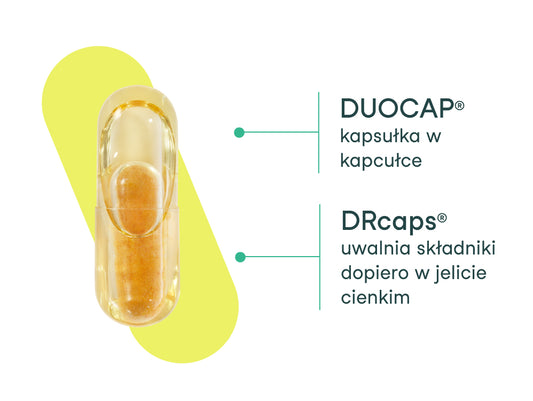
Labor pain is a valuable source of information about what is happening to the mother and baby. However, there are ways to alleviate it.
Different women experience labor pain differently. Some talk about the feeling as if something was tearing them apart from the inside, they describe unbearable lower back pain and ailments they have never felt before. Others admit that yes, it hurts, but it is bearable. Some people find it helpful to know that millions of women have gone through this before them and it is the only way to welcome their child into the world. Others choose anesthesia or use other natural pain relief techniques.
Specialists emphasize that a lot depends on attitude . You can help yourself by using natural methods if the fear of childbirth and pain is not very severe. In other cases, when a psychiatrist determines the presence of tokophobia (i.e. a morbid fear of childbirth, in which a woman fears for her own life and that of her baby), a decision may be made to perform a cesarean section. You can read more about tokophobia in this article . If there are no medical indications for a cesarean section, it is worth spending time and effort to get used to the idea of natural childbirth and the pain that accompanies it. The natural solution has huge benefits for the child's health (read more about it in a separate article ).
The pain of labor is a source of information.
Childbirth is painful because the contractions of the uterine muscles put pressure on the nerves and temporarily tighten the blood vessels. This hinders the supply of blood with oxygen and the removal of blood with combustion products, including: lactic acid, which irritates nerve endings. During childbirth, the cervix and perineal tissues also hurt. And because the baby's head presses on the nerves around the spine, the back hurts, especially the sacrum. These ailments cause many women to describe childbirth as a traumatic experience, also due to insufficient care for the pregnant woman and depriving her of her subjectivity, which results from subsequent reports, among others. Rodzic po Ludzku Foundation. However, pain is also a valuable source of information about what is happening in the body at a given stage of labor .
" Pain "motivates instinctive behavior (e.g. changing position, type of breathing, making sounds), which dynamize the course of childbirth and make it safe for the woman giving birth and the baby" - writes the Rodzic po Ludzku Foundation, which has been monitoring what happens for over 20 years happening in Polish maternity wards and fighting for women's right to a dignified childbirth. Pain also "triggers the secretion of hormones, in particular endorphins, which act as an anesthetic during childbirth, and after birth are responsible for the formation of bonds between mother and child . " The Foundation emphasizes that Painful contractions are not a symptom of pathology. Using methods to help deal with them can significantly affect the comfort of the pregnant woman and help in the smooth course of childbirth.
Fear interferes with childbirth.
Specialists emphasize that anxiety, stress, insecurity and strong stimuli (noise, hunger, bright light) reduce the amount of endorphins secreted. This increases the production of adrenaline. This causes increased tension, blood vessel spasm, muscle contraction and excessive energy consumption. This disrupts the labor process and prolongs the delivery time. In Poland, apart from the above-mentioned anesthesia, to which every patient is entitled, inhalation analgesia is also used , i.e. a mixture of nitrous oxide and oxygen , which is quite a popular method. In the UK, the use of the TENS method, i.e. transcutaneous electrical stimulation, is popular, which involves electrically affecting the back muscles using glued electrodes . In Poland, this method is also available, and a compact TENS device can be purchased or rented even a few weeks before delivery.
What can you do to increase comfort and relieve pain?
Make sure you feel safe .
Birthing classes, preparing a birth plan, choosing a midwife and a hospital will help with this. The presence of a loved one - partner, mother, sister or friend - is an invaluable help for the woman giving birth. More and more women are also choosing to have a doula accompany them during childbirth. This is usually a woman who is a mother herself, has gone through childbirth many times, and is often trained in midwifery. She will support you with words, holding your hand, massage, and her presence alone has a soothing effect. It is important to eliminate anxiety before it even appears.
Movement is a natural anesthetic.
You can walk, swing, crouch, swing on a ball, pull on a special bag or use ropes or ladders. The Rodzi po Ludzku Foundation recommends a number of vertical positions for childbirth on its website, which many women choose intuitively.
Learn birth breathing.
In every childbirth class, women preparing for childbirth are taught how to breathe to eliminate pain. How? Deep and steady, at regular intervals. Inhale through the nose, exhale through the mouth. It is worth working on relaxation breathing techniques during pregnancy. Birthing classes or an experienced midwife will help.
Massage works wonders.
It does not completely eliminate the pain, but it brings great relief, helps you relax and gives you energy. Massaging the lumbar-sacral area reduces the pain of cramps. However, you must remember that the pressure should not be too strong, the hands of the person giving the massage should be warm, and the woman giving birth should be in the most comfortable position for her. Some doulas specialize in massage with a rebozo scarf, which is placed under the belly and gently pulled on both sides. You can also try acupressure - but it is worth checking first how it works on a pregnant woman.
Warm and cold compresses bring good results.
Using them alternately prevents ischemia in a given part of the body. Warmed towels, gel compresses, hot water bottles and ice cubes wrapped in a thin towel or diaper will work well. They can be placed on the lower abdomen, perineum and lower back.
Hydrotherapy for labor pain.
Immersing yourself in water, like its sound, helps reduce stress, tension and pain. In the early stages of labor it may be a shower, later you can enter the bathtub or jacuzzi. Water will improve blood pressure and oxygenate the muscles, baby and placenta. Some hospitals even offer the option of water birth.
Scream as much as you want.
Suppressing screams and other sounds causes increased tension in the body and, therefore, increased pain. You can do anything - scream, purr, gasp. It's natural and helps you deal with the pain. Relaxing the throat muscles by screaming also helps dilate the cervix, so it has a double benefit.
Aromatherapy relieves the stress associated with childbirth.
Diffusing essential oils, especially citrus ones, helps pregnant women feel less stressed during labor. The importance of mental attitude, as already described above, cannot be overestimated in this situation. You can read more about how smells control our brain in this article . However, it is worth trying aromatherapy before the start of labor and choosing only those aromas of oils that do not cause allergies and that the woman likes.
Hypnosis.
We devoted a separate article to this type of labor pain relief. You'll find it here.
Bibliography:
- “Non-pharmacological methods of pain relief”, Roździ po Ludzku Foundation, dziennikpoludku.pl, accessed December 28, 2021.
- “Massage during childbirth”, Roździ po Ludzku Foundation, dziennikpoludzku.pl, accessed December 28, 2021.
- “Vertical birthing positions – examples”, Roździ po Ludzku Foundation, dziennikpoludzku.pl, accessed December 28, 2021.
- Piasek G., Adamczyk-Gruszka O., Radomski P. and others, "Unconventional methods of relieving labor pain", Studia Medyczne 2012.
- “Methods for alleviating labor pain”, Polish Maternity Cell Bank, October 19, 2020.
- Krogulska E., “10 ways to relieve labor pain (without anesthesia)”. Dziecisawazne.pl, accessed December 28, 2021.
- Rashidi-Fakari F., Tabatabaeichehr M., Mortazavi H., “The effect of aromatherapy by essential oil of orange on anxiety during labor: A randomized clinical trial”, 2015.


What makes our capsule stand out?
The nikalab capsule impresses not only with its appearance, but also with its operation. We used two innovative...








